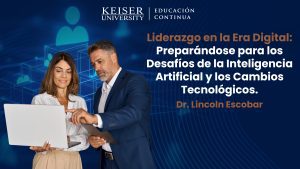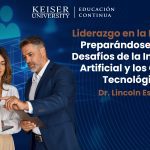By Denis Rodriguez Z.
For centuries, the creation of innovative technology – from steam engines and automobiles to computer and smartphone – has dramatically changed the nature of our work, says Harvard Business School Professor Debora Spar.

Figure 1. The adding machine, Leonardo da Vinci’s sketches at grunge.com
In fact, as some technologies have come into our lives in different stages of it, they have improved our daily life activities in some degree. As human beings, we have been creating tools to reduce our physical effort dealing with our tasks and help us taming the harsh environment. Either way we have been changing our planet, countries, and communities. It is out of the scope of this article to count down the most important technological breakthroughs during the human history; Although, that could be guided by using two perspectives. First, top 20 greatest inventios of all time: Fire, Wheel, Nail, Optical lenses, Compass, Paper, Gunpower, Printing press, Electricity, Steam engine, Internal combustion engine, Telephone, Vaccination, Cars, Airplane, Penicillin, Rockets, Nuclear fission, Semiconductors, Personal computer, and the Internet, says Big Think Paul Ratner. Second, 10 Breakthrough Technologies 2021: Messenger RNA vaccines, GPT-3, TikTok recommendation algorithms, Lithium-metal batteries, Data trusts, Green hydrogen, Digital contact tracing, Hyper-accurate positioning, Remote everything, and Multi-skilled AI, says Massachusetts Institute of Technology (MIT) Technology Review.
It is remarkable that six of the 10 Breakthrough Technologies 2021 are related with Information Technology and two of them specifically with AI. Most of the technologies have been changing the professional and personal life of people worldwide. Of course, the level of change depends on the country income level and our yearly income for households.
“The machines we create begin to recreate us as well, to change the work we do, the lives we lead, and what we define as good,” says Spar. With technology, whether simple or complex; at workplace, house, or personal space; expensive or affordable, the use of it will change us in a way that it needs to be decided sooner or later.
Generation Z. Millennials. Baby Boomers. It’s hard not to run into eye-catching headlines about generations these days. And it’s easy to feel like many of these headlines are just clickbait, all fluff and no substance, says Michael Dimock in a Pew Research Center article, 5 things to keep in mind when you hear about Gen Z, Millennials, Boomers and other generations in 2023. Even some generations have been attached with some technology like Generation Z, Millennials, and Baby Boomers. Nevertheless, most of the researchers agreed that generational categories are not scientifically defined. Nevertheless, it is used in our societies.
To meet President Kennedy’s proposal to land a man on the Moon before 1970, NASA engineers started to use the Lunar Module during the Apollo 13 mission. The Apollo Guidance and Navigation system, controlled by the Apollo Guidance computer incorporated the first Silicon Chips. “ As we enjoy the products and software flowing like a torrent out of the Valley, we should recall its modest beginnings and the courage of the Apollo engineers who were bold enough to choose a circuit that “crammed” all of six devices on a sliver of silicon.” Ceruzzi writes.
As you can see, technology has greatly influenced our work, lives, and societies, but with the innovation as a core component in the case of the most successful technology enterprises like Apple, Microsoft, Google, Facebook, and IBM to mention some of them, we might just be getting started with technological advances on which AI would become in a game changer for innovation.
The first tenet of Job’s legacy is tied to creating a culture of innovation at Apple. Jobs had an uncanny sense of what a consumer might want in the way of technology and drove Apple’s innovation in this direction, says Tim Bajarin in a web article, Steve Jobs’ Legacy Still Drives Apple’s Current And Future Products, Forbes.
The two breakthrough technologies 2021 referenced by MIT Technology Review depicted the key role that AI have been playing on those breakthroughs and it has a high probability to increased his influenced-on breakthrough technologies in 2022 and beyond.
Since November 2022 AI has been on the spotlight and strengthen its position as a trend IT topic. Although, Alan Turing explored the mathematical possibility of artificial intelligence in the first half of the 20th century. In fact, that artificial intelligence has evolve through cycles of hype during the last decades. That includes breakthroughs in computer vision, language recognition, speech recognition, and recently in natural language processing. The application for those technology has grown in a quickly pace. Let is talk about this topic in more details.
“In the first half of the 20th century, science fiction familiarized the world with the concept of artificially intelligent robots. One such person was Alan Turing, a young British polymath who explored the mathematical possibility of artificial intelligence. Turing suggested that humans use available information as well as reason in order to solve problems and make decisions, so why can’t machines do the same thing?”, says Rockwell Anyoha in a web article in a special edition on Artificial Intelligence Blog in 2019.
“Computing is not the main application of computers. The main goal is to teach the computer to think, i.e., what is now called “artificial intelligence” and in those days heuristic programming ”, said Georgy Maximovich Adelson-Velsky.
Artificial Intelligence (AI), a term coined by emeritus Stanford Professor John McCarthy in 1955, was defined by him as “the science and engineering of making intelligent machines”.
There are three kinds of AI based on capabilities: Artificial Narrow AI, General AI, Super AI. Besides, there are four types of AI based on functionalities Reactive Machine AI, Limited Memory AI, Theory of Mind AI, and Self-Aware AI. Weak AI—also called Narrow AI or Artificial Narrow Intelligence (ANI)—is AI trained and focused to perform specific tasks. Strong AI is made up of Artificial General Intelligence (AGI) and Artificial Super Intelligence (ASI). Artificial general intelligence (AGI), or general AI, is a theoretical form of AI where a machine would have an intelligence equaled to humans. Artificial Super Intelligence (ASI)—also known as superintelligence—would surpass the intelligence and ability of the human brain, said IBM Data and AI Team.

Figure 2. AI Photo Generated with this article metadata at Perchance.org
Deep learning and machine learning are sub-fields of artificial intelligence, and deep learning is actually a sub-field of machine learning. The way in which deep learning and machine learning differ is in how each algorithm learns. Deep learning automates much of the feature extraction piece of the process, eliminating some of the manual human intervention required and enabling the use of larger data sets. Machine learning is more dependent on human intervention to learn, writes IBM Data and AI Team.
ChatGPT, OpenAI’s text-generating AI chatbot has taken the spotlights since November 2022. Nobody was prepared for this “research preview”, says Sandhini Agarwal, who works on policy at OpenAI. Less than a year later of ChatGPT launched a couple of artificial intelligence assistants like Microsoft Copilot and Google Duet are leading the battle of the next-gen AI smart assistants.
In the case of AI there is a global dialog between technology enterprises developing this technology about to create norms to ensure organizations develop and deploy AI responsibly. It is crucial that industry, academia, civil society, and government collaborate to create those norms and eventually industry standards. Some AI enterprises like Microsoft, Google, IBM, and Amazon have released some standards, principles of AI. Microsoft Responsible AI Standard: Accountability, Transparency, Fairness, Reliability & Safety, Privacy & Security, and Inclusiveness goals. Google AI objectives: Be socially beneficial, Avoid creating or reinforcing unfair bias, Be built and tested for safety, Be accountable to people, Incorporate privacy design principles, Uphold high standards of scientific excellence, and Be made available for uses that accord with these principles. IBM pillars: Explainability, Fairness, Robustness, and Transparency. AWS core dimensions of responsible AI: Fairness, Explainability, Privacy and security, Robustness, Governance, and Transparency.
ChatGPT and AI search engines from Microsoft and Google have emerged in summer of 2023. Although, AI is not new to smart phones; features like voice assistant started in 2011 into the iPhone 4S, facial recognition started in 2018 into the iPhone 10; language translation started in 2018 into the Google Pixel 3.
Be an early bird has advantages and disadvantages. Although, it is possible to manage the risks and gain most of the benefits of the novel technology. In 2023, the trending technology topic is generative AI, a technology that some moguls like Bill Gate and Sundar Pichai believe could be as monumental as the dawn of the smartphone and the Internet itself, says Lisa Eadicicco CNET.
Embracing AI would transform our lives one more time or delaying it adoption would avoid those transformation in our lives. Its time to make a risk analysis and take a decision about it and face the outcomes of that decision.
Metadata: Innovation, Technology, Information, Generative AI, Artificial Intelligence, Human Being.















